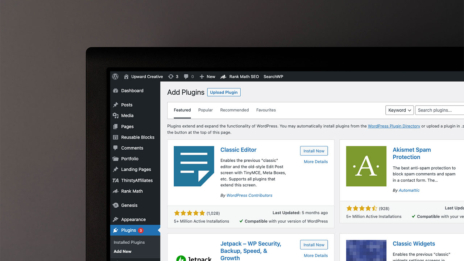
Do people come to your website but leave right away?
Maybe you’ve noticed that website visitors do not explore other pages on your website; it appears that when they land on your website, what they find is a good reason to leave instead of stay.
These single-page sessions where a visitor leaves the site without engaging or interacting are called bounce rate or exit rate — and a high bounce rate is bad news.
“Bounce Rate is the percentage of single-page sessions (i.e. sessions in which the person left your site from the entrance page without interacting with the page).”
Google
Table of Contents
What does a high website bounce rate mean for you?
If your website has a high bounce rate you’re losing money!
It’s a clear indication that your website is not meeting your visitor’s expectations or needs or that it is badly designed.
It’s a clear sign to you and Google that your website is not benefitting the visitors it’s attracting the way it should. In fact, it’s could be creating a negative image for your business, which can be evident in your page ranking.
This website bounce rate or “exit rate” shows there was traffic that could have led to conversions, but because of certain components of your website, you prospect immediately “bounced” off your site to another.
When a website visitor bounces you’ve lost the opportunity to secure a lead or sale or even convince them to read a further page.
No business can afford these setbacks. So if your bounce rate is high, you must start making strategic improvements to your website.
As you can see reducing bounce rate is key to increasing leads and sales.
So…
What is a good bounce rate for a website?
This can depend on industry and vary from website to website…
But according to my friends over at Quicksprout the benchmarks and realistic expectations for average bounce rates are:
- Content Websites: 40–60%
- Lead Generation: 30–50%
- Blogs: 70–98%
- Retail Sites: 20–40%
- Service Sites: 10–30%
- Landing Pages: 70–90%
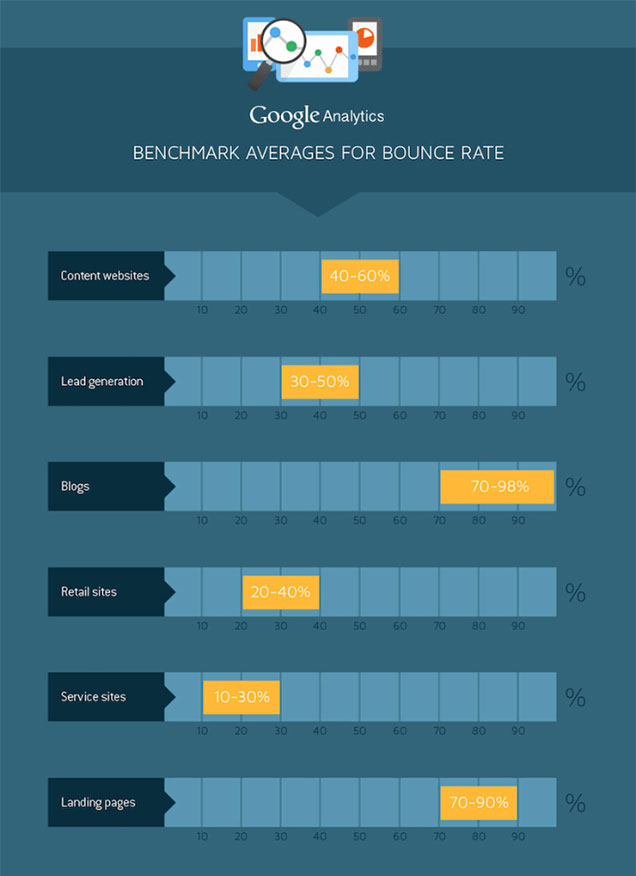
How to find your websites bounce rate
Finding your websites bounce rate is simple…
- Log in to Google Analytics (if you don’t have this, I highly advise you set it up now)…
- Select your website name from the dashboard…
- Click “Behaviour” in the left-hand menu…
- Under “Behaviour”, click “Site Content”…
- Under “Site Content”, Click “All pages”…
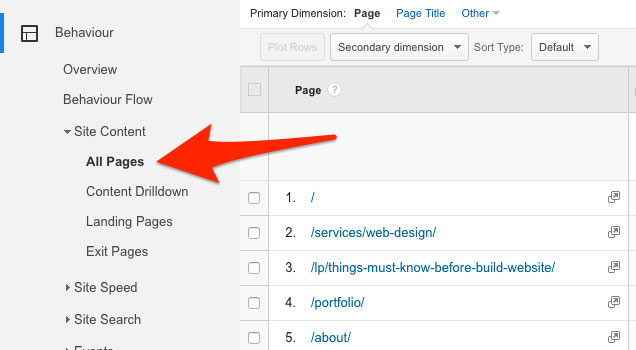
You should now see your websites average bounce rate listed under the “Bounce Rate” column in the main content table.
Under this table, you can then view the bounce rate for every individual page on your site.
So, what should you do to improve bounce rate?
Here are five effective changes that will bring your website’s bounce rate down and increase lead generation…
1) Make sure you have a responsive or mobile-friendly website!
A mobile-friendly website design will make sure that the huge numbers of people using mobile phones and tablets to connect to the internet can properly view your website.
According to Smart Insights, 27% of people around the globe use their smartphones and mobile gadgets for more than half of their Internet activities.
Most people nowadays are impatient and want information to be instantly accessible. If you build a mobile friendly website design, your website will display properly and be easily viewable, no matter what gadget visitors are using.
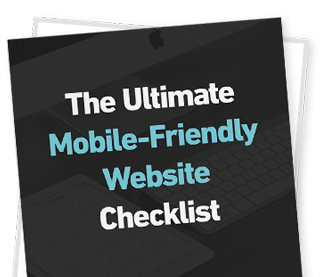
Use simple tactics in this free website checklist to fix your leaky website or avoid expensive mistakes before you start
Yes, Send My FREE ChecklistThe payoff: You can better maintain their interest, keep them on site, improve Google rankings and turn their interest into a lead or sale.
2) Find out what your visitors like or want
Check out your website analytics to find out if the people who came to your site were first-time or frequent visitors.
You can do further research by heading to other sources (social networking sites) that will allow you to research and get more details on your target audience.
In doing this, you can make your website more attractive to your perfect customer. You can also enhance website features and qualities that are already working.
Deciding on your perfect customer will also help you to determine how much a website costs.
3) Display social proof
Prove to website visitors that your business delivers results and value for money by displaying testimonials, ratings, and positive customer feedback…
Studies reveal that testimonials determine about 50% of all online buying decisions; meanwhile, high ratings increase purchases by 55%.
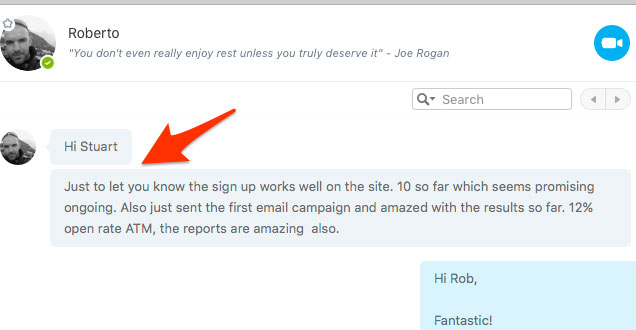
People and website users have a strong herd mentality. Placing social proof on your website right where it’s easily viewable will take advantage of this mentality and encourage visitors to stay and view other pages.
4) Find ways to improve your visitors’ user experience
There are many ways to improve user experience…
One of the easiest wins is to make sure your navigation is incredibly easy-to-use.
Be sure to place all important navigation components (contact details, thumbnails to other pages, CTAs, sign-up forms, etc.) right where your visitors can easily see them and use a logical and consistent layout throughout.
You must also create a website design that resonates with your perfect customer.
Utilise the right colours, images, fonts, even trust seals, and all other design components to appropriately represent your brand, as well as meet the approval of your target market.
Remember, people are visually inclined and unfortunately do judge a book (and your business) by its cover, so it’s smart to appeal to their aesthetics.
Related: Top 9 Small Business Website Design Mistakes to Avoid
5) Use persuasive calls to action
It’s not just about getting site visitors to stay but engaging them to complete that final call-to-action that generates a lead or sale for your business…
Create your website content first, use the power of words to create a sense of urgency to get them to click, and be sure to deliver on your promise.
The bottom line is, you must…
Reduce website bounce rate to increase visitors, engagement, leads and sales!
High website bounce rates can be discouraging, but applying the five strategies mentioned here will help you to decrease bounce rate and increase lead generation.
What are you waiting for? Start your beautiful, mobile-friendly website today to get low bounce rates and increase sales!
What are some other ways you can reduce bounce rate? Write your thoughts in the comments below…

